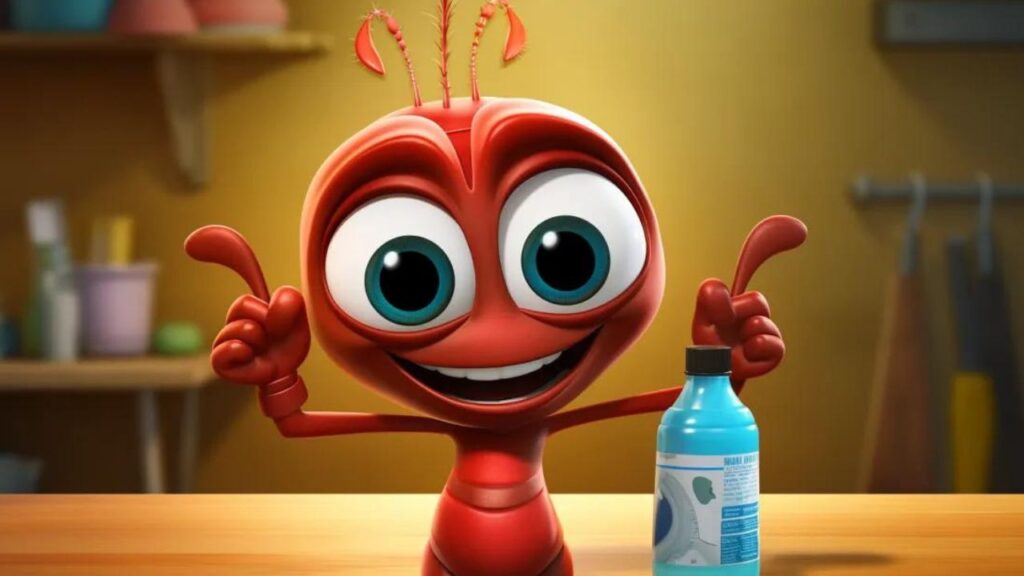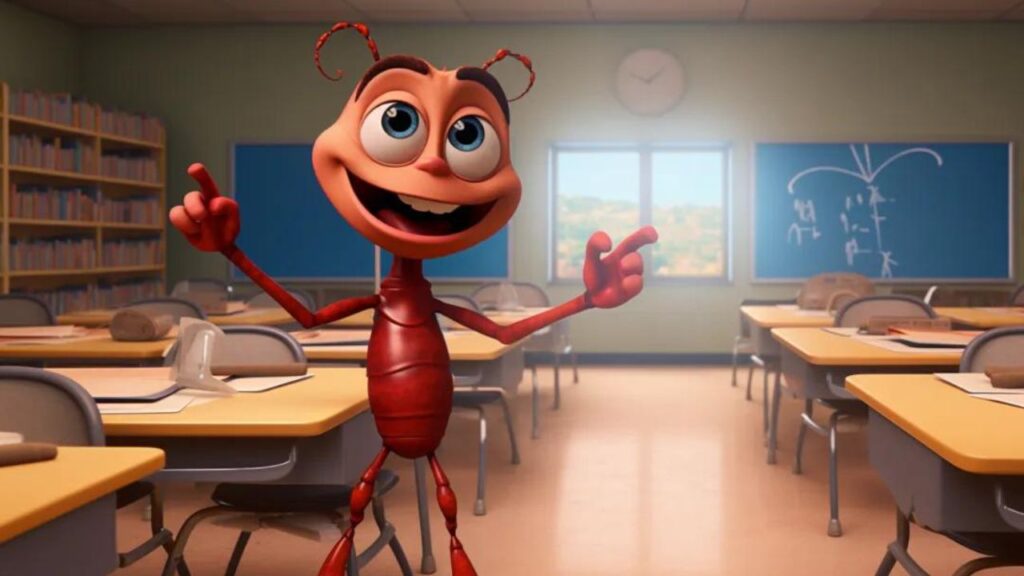TL;DR Summary
Ants carry their dead as part of their sophisticated hygiene and sanitation practices, a behavior known as necrophoresis. This instinctual process is crucial for preventing disease spread within the densely populated colony. Ants recognize their dead through chemical signals, particularly oleic acid, which triggers undertaker ants to remove and dispose of the corpses in designated refuse sites, effectively acting as graveyards. These practices ensure the colony’s health and contribute to ecological nutrient cycling by returning organic matter to the soil. Understanding these mortuary practices offers insights into the complex social structures of ants and reflects the broader ecological impact of their actions within natural ecosystems. So, ants carry their dead to keep their colonies clean and prevent diseases, not out of mourning or any cultural significance akin to human funerary rites.
Hello, I’m Professor Abigail Antenna, and I’ve devoted countless hours to observing the complex social structures of ants. Among the many intriguing aspects of their behavior is one that often sparks curiosity: why do ants carry dead ants? This behavior, commonly witnessed but seldom understood, provides profound insights into the social and biological lives of these insects.
Witnessing Ant Funeral Rites
- A Common Sight in the Insect World: Observers of ants may frequently notice an ant carrying the lifeless body of another. Far from a morbid curiosity, this act is a critical component of ant colony behavior, often referred to as ‘ant funeral rites.’
- Ritualistic Undertones: While it’s not a funeral in human terms, the systematic and deliberate manner in which ants handle their dead can seem ritualistic. These actions are ingrained in their instinctual behaviors, serving purposes vital for the colony’s health and survival.
The Purpose Behind Carrying the Dead
- A Matter of Colony Health: The primary reason ants carry their dead is not out of respect or mourning, as humans might project, but rather a practical response to prevent disease and maintain colony hygiene.
- Efficient Colony Management: By removing deceased members from the nest, ants prevent decay and potential pathogen growth that could harm the colony. This disposal is a testament to their efficiency and the natural instinct to protect the living community.
Insights into Ant Social Behavior
- Complex Social Systems: The behavior of carrying dead ants offers a window into the complex social systems of ant colonies. Each member has a role, and the act of removing the dead is as crucial as foraging for food or caring for the young.
- Chemical Communication: Ants communicate via chemical signals, and the recognition of death triggers a specific response. The dead ant releases oleic acid, a chemical cue that prompts other ants to remove the body and keep the nest clean.
- Collective Behavior: This collective response to death is a key aspect of ant social behavior. It maintains not only physical health but also the structural integrity of their intricate social hierarchy.
The practice of carrying dead comrades is emblematic of the broader themes that define ant life: cooperation, efficiency, and the instinctual drive to preserve the colony. As we delve deeper into this behavior, we will uncover the evolutionary and practical reasons why ants engage in this remarkable act, which is as much about life as it is about death.
Ant Mortuary Practices

Within the realm of ant colonies, their practices surrounding death are as sophisticated and methodical as those governing their daily lives. My observations and studies have uncovered a consistent and fascinating approach to dealing with their deceased.
The Discovery of Death
- Chemical Recognition: Ants possess the ability to chemically recognize the death of a colony member. When an ant dies, its body begins to emit a specific cocktail of chemicals, primarily oleic acid, which signals to other ants that their nestmate is no longer alive.
- Behavioral Shift: This chemical change prompts a behavioral shift in the ants. They switch from cooperative interactions to undertaking duties, a transition that is crucial for the colony’s wellbeing.
- Immediate Action: The discovery of a dead ant sets into motion an immediate response. Worker ants swiftly assess the situation and prepare to remove the body from the nest to a designated refuse area, preventing any delay that could lead to health risks for the colony.
Removal of the Dead
- Undertaking Roles: Some ants are more frequently involved in the removal of the dead, often those who are older or nearing the end of their life span. This ensures that the healthier, younger ants can continue to perform essential tasks like foraging and brood care.
- Efficient Transport: The ants employ efficient methods to transport their dead, leveraging their strength and teamwork. They will carry the deceased ant away from the nest, often taking well-trodden paths to refuse piles or designated graveyard areas.
- Nest Sanitation: The removal of the dead is a critical aspect of nest sanitation. By keeping the nest clean, ants prevent the spread of bacteria and fungi that could thrive on the bodies of deceased nestmates.
The ‘Graveyards’ of Ants
- Designated Dumping Grounds: Ants create specific areas, often referred to as ‘graveyards,’ where they deposit their dead. These areas are typically located at a safe distance from the colony to avoid contamination.
- Changing Graveyards: The location of these graveyards may change over time as the colony grows or environmental conditions shift. Ants are adaptable and will adjust their mortuary practices to suit the needs of the colony.
- Ecological Role: These ant graveyards play an ecological role, as the decomposing bodies release nutrients back into the soil, which can be utilized by plants and other organisms, thus contributing to the nutrient cycle.
The mortuary practices of ants, characterized by the discovery, removal, and deposition of their deceased, reflect a deep-seated biological imperative to preserve the health of the colony. Through their actions, ants demonstrate an intrinsic understanding of the importance of hygiene and disease control, which is as vital to their success as their more visible activities like foraging and defense. These practices also show the complex social structures and roles within the colony, with each ant contributing to the colony’s longevity, even in death.
Hygiene and Disease Control

In my study of myrmecology, I have found that the hygiene and disease control strategies of ants are as critical to their survival as their more heralded foraging and defense tactics. Ants exhibit highly developed behaviors designed to prevent disease and maintain colony health.
Preventing Disease Spread
- Proactive Measures: Ants take proactive measures to prevent the outbreak of disease within their colonies. The removal of dead ants is a key part of this strategy, as decaying bodies can become breeding grounds for bacteria and fungi that may harm the colony.
- Quarantine Tactics: Some ant species will isolate infected individuals or move them to specific areas of the nest to prevent the spread of pathogens. This behavior is akin to quarantine measures in human societies and showcases a highly evolved response to health management.
- Collective Immunity: By keeping their nest clean, ants contribute to a form of collective immunity. A cleaner nest environment means fewer opportunities for pathogens to take hold, which benefits the entire colony.
Nest Sanitation
- Routine Cleaning: Ants are diligent in keeping their nest clean. Workers routinely remove debris and waste, including dead bodies, which helps maintain a sanitary living space.
- Architectural Design: The architecture of the ant nest itself is designed to facilitate cleanliness. The structure of the nest, including its ventilation systems, helps to manage waste and moisture levels, reducing the risk of disease.
- Hygienic Behaviors: Ants also engage in personal and communal grooming behaviors, further reducing the risk of disease. They will often clean each other, removing potential pathogens from their bodies.
Chemical Signals and Corpse Management
- Necrophoresis: The process by which ants remove their dead is known as necrophoresis and is guided by chemical signals. When an ant dies, it releases oleic acid and other chemicals that signal to living ants that it’s time to remove the body.
- Specialized Workers: Certain workers are tasked with corpse management, taking on the role of undertakers. These ants are responsible for identifying, picking up, and transporting dead ants out of the nest.
- Chemical Cues: The chemical cues associated with dead ants ensure that only deceased members are removed. This precision avoids any mistakes, such as carrying off live ants, and is a testament to the sophistication of ant communication.
The meticulous hygiene and disease control measures observed in ants are a remarkable example of nature’s intrinsic understanding of health management. These behaviors, driven by chemical communication and carried out with precision, underscore the ants’ complex social organization and their collective prioritization of colony well-being. The study of these practices provides valuable insights into the balance between individual and group survival strategies, reinforcing the importance of sanitation for the success of social organisms.
The Necrophoric Behavior of Ants

As a seasoned myrmecologist, I’ve had the privilege of witnessing the necrophoric behavior of ants firsthand. This behavior, which involves the handling and removal of the deceased from the nest, showcases the complexity and social intelligence of these creatures.
Recognizing the Dead
- Chemical Detection: Ants are equipped with highly sensitive antennae that detect the specific chemicals released by dead colony members. This chemical change, often involving oleic acid, is a death cue that prompts the living ants to take action.
- Verification Process: When an ant comes across a motionless nestmate, it will often engage in a verification process, using its antennae to assess whether the individual is indeed deceased or simply injured, ensuring that only the dead are transported to refuse piles.
- The Role of Experience: Interestingly, the ability to recognize and respond appropriately to the dead can be influenced by an ant’s experience. Older ants are often more proficient in recognizing these cues, which may contribute to their roles as undertakers within the colony.
Carrying Techniques and Rituals
- Efficient Transport: Ants use their strong mandibles to grasp and carry their dead. They will often form a procession, with several ants working together to transport a body, particularly if the deceased ant is large.
- Designated Burying Grounds: The ants carry the dead to designated areas, which are specifically chosen to prevent contamination of the colony. The choice of these sites is strategic and ensures the health and hygiene of the nest.
- Ritual-like Precision: The consistency and precision with which ants carry out these tasks can appear ritualistic. However, these behaviors are not ceremonial but are practical actions that serve the colony’s survival.
Social Implications of Necrophoric Behavior
- Maintaining Social Order: Necrophoric behavior is essential in maintaining social order within the colony. By removing the dead, ants prevent confusion and disruption that could occur if deceased members were left within the nest.
- Collective Responsibility: While certain ants may take on the primary role of undertakers, the responsibility of recognizing and removing the dead is shared among colony members. This collective approach ensures the efficiency and effectiveness of necrophoric behavior.
- Impact on Colony Morale: Although ants do not experience emotions as humans do, maintaining a clean environment free of decay is believed to impact colony morale positively. It allows ants to focus on essential activities like foraging, nest building, and caring for the brood.
The necrophoric behavior of ants is a poignant reminder of the complexity of life within an ant colony. It underscores the importance of each member’s role and the collective efforts to sustain the health and efficiency of the group. Through their systematic handling of death, ants demonstrate an evolved form of social cooperation and a deep-rooted instinct to preserve the well-being of their community.
Comparative Behaviors in Other Species

As a myrmecologist, my interest often extends to comparing the behaviors of ants with those of other species, especially when it comes to their handling of the inevitable—death. This comparison reveals the diversity of evolutionary solutions to common challenges faced by social insects.
Ants vs. Bees: Mortuary Variations
- Bee Behavior: Bees, much like ants, have developed methods to handle their dead. Honeybees, for example, also remove deceased members from the hive to prevent disease, a behavior known as “undertaking.”
- Differences in Practices: While both ants and bees remove the dead from their homes, the method can vary. Bees may carry their dead over greater distances from the hive, while ants tend to have closer refuse sites or graveyards.
- Varied Sensitivity to Death: Bees may not respond to the same chemical cues as ants. Their recognition of death may not rely on oleic acid but other signals or a lack of signals, like the pheromones of a live bee.
Social Insects and Death Management
- Termites: Termites, another group of social insects, manage their dead differently. Some termite species wall off chambers containing dead members, turning them into tombs within the nest structure.
- Wasp Colonies: Social wasps remove dead individuals from the nest, but they may not have designated refuse sites, often dropping the bodies away from the nest in a less organized manner than ants.
- The Role of Social Structure: The differences in death management among social insects reflect their ecological needs, nest structures, and social organization. Each species has developed a method that fits its lifestyle and environment.
The Evolution of Death Recognition
- Adaptive Advantage: The ability to recognize and respond to death provides a clear adaptive advantage to social insects. It reduces the risk of disease, which can quickly decimate a closely living colony.
- Evolutionary Convergence: The evolution of death recognition and mortuary behavior in diverse species is an example of convergent evolution, where unrelated species develop similar traits to solve similar problems.
- Insights into Social Evolution: The study of how different species manage death offers insights into the social evolution of insects. It highlights the importance of sanitary practices in the success and longevity of social living.
In conclusion, the behaviors exhibited by ants and other species regarding death management showcase the remarkable adaptability and evolutionary innovation of social insects. These behaviors are not just about the dead; they are about preserving life and the continuity of the community. The comparative study of mortuary practices across species deepens our understanding of the complex relationship between life and death in the insect world and the profound ways in which these creatures have adapted to maintain the delicate balance of their societies.
Conclusion

As we draw to a close on this exploration of death and its significance within ant colonies, we come away with a greater understanding of the sophistication inherent in these tiny societies. My observations and research have unveiled not only the practicalities of how ants manage death but also the broader implications of their funerary practices.
The Significance of Death in Ant Colonies
- Instinctual Imperatives: In ant colonies, the management of death is driven by instinctual imperatives that preserve the health of the community. The systematic removal and disposal of deceased members reflect an evolved collective behavior that prioritizes the colony’s well-being.
- Cultural Comparisons: While it may be tempting to draw parallels between human cultural practices surrounding death and ants’ mortuary behavior, it’s important to recognize that ants act out of biological necessity rather than any cultural or emotional impetus.
- Social Cohesion: The acts of recognizing, carrying, and disposing of the dead contribute to the social cohesion and operational efficiency of the colony. These necrophoric behaviors ensure that ants can continue their roles without the disruption that unmanaged death could cause.
Broader Ecological Impact of Ant Funerary Practices
- Nutrient Cycling: The disposal of ant bodies contributes to nutrient cycling, with their decomposing forms returning vital substances back to the earth, fostering new growth and maintaining the health of the ecosystem.
- Inter-Species Interactions: Ant funerary practices also impact other species, such as scavengers and decomposers, which might rely on these bodies as a food source or for other ecological functions.
- Influence on Habitat: The behaviors surrounding death, particularly the creation of refuse sites, can influence the physical and biological makeup of the ants’ habitat, affecting everything from soil chemistry to the distribution of microorganisms.
Reflecting on the Cycle of Life and Death in Nature
- A Microcosm of Nature’s Processes: Ants and their management of death serve as a microcosm of nature’s larger processes, where death begets life, and decay leads to regeneration.
- Respect for Nature’s Systems: As a myrmecologist, I have grown to respect these systems and the roles all creatures, great and small, play within them. The study of ants reinforces the interconnectedness of all life and the importance of each species’ contributions to the natural world.
- Continued Curiosity: This investigation into the cycle of life and death in ant colonies stokes the fires of curiosity and respect for these extraordinary insects and reminds us of the complex tapestry of existence that is woven through even the smallest of actions in the natural world.
In sum, the rituals surrounding death in ant colonies are critical to the survival and success of these insects. They also hold a mirror to the broader ecological systems in which they exist, reminding us of the delicate balance of life and death. As we continue to study and understand these processes, we gain not only scientific knowledge but also a deeper appreciation for the marvels of the natural world and our place within it.

